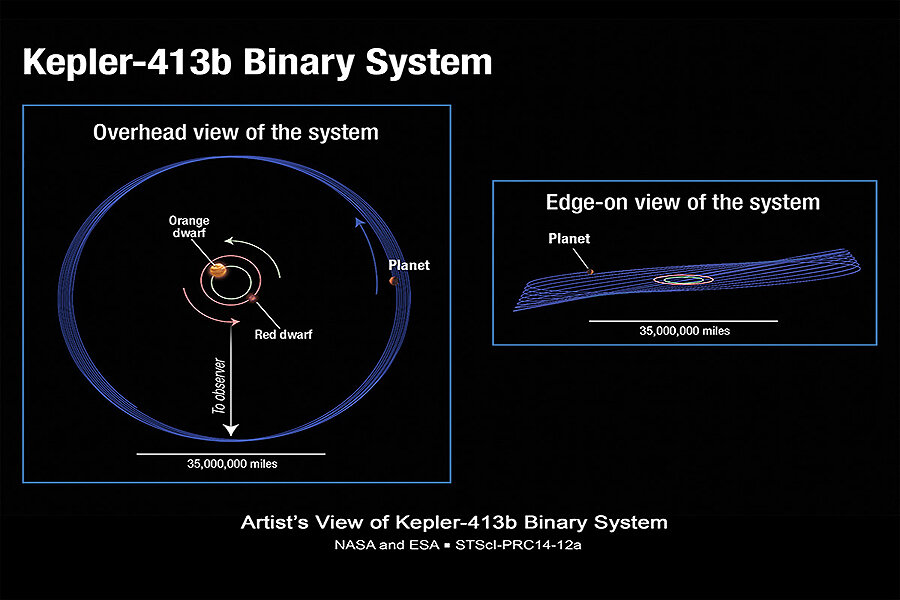Astronomers spot humongous, wobbly, speedy, gassy planet
Loading...
This wacky planet cannot seem to make up its mind.
Kepler-413b, a planet spotted by NASA's planet-hunting Kepler space telescope, wobbles wildly on its spin axis, like a child's top that is slowing down, say researchers who spotted it as it passed in front of its star.
Its orbit of precession is about 10,000 times faster than that of the Earth, Veselin Kostov, with the Space Telescope Science Institute (STScI) and the Johns Hopkins University (JHU) in Baltimore, who was also the principal investigator on the observation, told the Monitor.
The Earth's precession has a 100,000-year cycle, whereas Kepler-413b's has an 11-year cycle, he says.
The tilt of its spin axis, too, can vary by as much as 30 degrees over 11 years, according to a press release from STScI. Compare this to the Earth's angle of precession that is constant at 23.5 degrees over 26,000 years.
The anomaly was noticed when astronomers using Kepler discovered an unusual frequent pattern of transits for Kepler-413b. Planets are spotted after they pass in front of their parent star, causing the light emanating from the star to dim slightly.
"What we see in the Kepler data over 1,500 days is three transits in the first 180 days (one transit every 66 days), then we had 800 days with no transits at all," said Mr. Kostov. "After that, we saw five more transits in a row."
Located 2,300 light-years away in the constellation Cygnus, this gas giant orbiting a binary pair of stars is about 65 Earth masses — a super-Neptune and is uninhabitable, say researchers. It orbits its star every 66 days.
The next transit is not predicted to occur until 2020, because the orbital plane of the stars may not align to our line of sight here on the Earth until then.
Also the orbit of the planet, which is tilted at 2.5 degrees with respect to the plane of the binary star's orbit, continuously moves up or down relative to our view. As a result, it misses passing in front of the stars, as seen from Earth.
"Presumably there are planets out there like this one that we're not seeing because we're in the unfavorable period," said Peter McCullough, a team member from STScI and JHU.
Researchers say that the planet has unpredictable weather and rapid changes in seasons because it wobbles a lot. Hence, the amount of light it gets from its parent stars, too, varies, Kostov told the Monitor.
The team's results appeared in the Jan. 29 issue of The Astrophysical Journal in a paper titled, "Kepler-413b: a Slightly Misaligned, Neptune-Size Transiting Circumbinary Planet."








